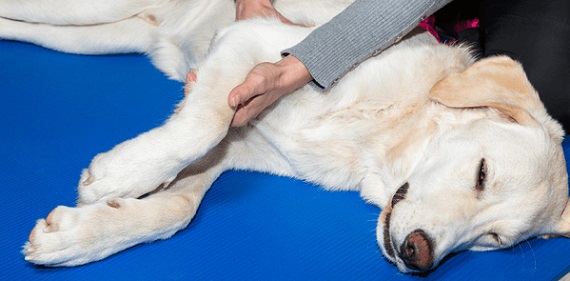Pet Health

Pet Healthcare Tips
Canine Arthritis: Symptoms, Causes, and Treatment for Joint Pain in Dogs

Is your dog a little less enthusiastic about his daily walks?
Is he reluctant to get up or lie down? Do his joints click as he walks? If so, there’s a chance your buddy is suffering from canine arthritis.
Just like humans, dogs can develop different types of arthritis, but the most common is osteoarthritis (degenerative joint disease).
What Is Osteoarthritis, and What Causes It?
Cartilage in joints acts as a cushion between bones. When this cartilage deteriorates, bones may rub against each other, causing pain and inflammation.
Common Causes of Canine Arthritis:
- Genetics: Some breeds are prone to hip dysplasia, which can lead to arthritis.
- Obesity: Excess weight puts strain on joints.
- Developmental Issues: Young dogs with improperly formed joints may develop arthritis early.
- Injury: Trauma or ligament damage (e.g., torn ACL) can trigger arthritis later in life.
- Age: Wear and tear over time leads to joint degeneration.
Symptoms of Arthritis in Dogs
If your dog shows any of these signs, consult your vet:
✔ Limping or favoring a limb
✔ Stiffness (especially after rest)
✔ Difficulty standing, jumping, or climbing stairs
✔ Swollen or warm joints
✔ Whimpering or licking painful joints
✔ Reduced activity or reluctance to play

Treatment Options for Canine Arthritis
While there’s no cure, treatments focus on pain relief and slowing joint damage:
1. Medications & Supplements
- Prescription drugs (NSAIDs, pain relievers) – Use only under vet supervision.
- Glucosamine & Chondroitin (Cosequin, Arthogen) – Helps rebuild cartilage.
- Omega-3 Fatty Acids – Reduces inflammation.
2. Diet & Weight Management
- Switch to a joint-supportive or weight-management dog food.
- Avoid overfeeding—extra weight worsens arthritis pain.
3. Alternative Therapies
- Acupuncture – Can relieve pain in some dogs.
- Physical Therapy & Hydrotherapy – Low-impact exercise strengthens muscles.
- Laser Therapy – Reduces inflammation and promotes healing.
4. Home Care Tips for Comfort
- Raise food/water bowls to ease neck strain.
- Use orthopedic beds for better joint support.
- Apply warm compresses (never heating pads) to stiff joints.
- Install ramps to help your dog avoid stairs.
- Keep them warm in cold/damp weather.
Frequently Asked Questions (FAQ)
Q: At what age do dogs typically develop arthritis?
A: While older dogs (7+ years) are more prone, arthritis can occur at any age—especially in breeds with genetic predispositions or after an injury.
Q: Can arthritis in dogs be reversed?
A: No, but early intervention can slow progression and improve quality of life through medication, supplements, and lifestyle changes.
Q: Are certain dog breeds more likely to get arthritis?
A: Yes. Large breeds (Labs, German Shepherds, Golden Retrievers) and breeds with hip dysplasia (Bulldogs, Pugs) are at higher risk.
Q: Is exercise good for a dog with arthritis?
A: Yes, but in moderation. Short, gentle walks and swimming help maintain mobility without straining joints.
Q: Can I give my dog human arthritis medication?
A: No! Many human pain relievers (e.g., ibuprofen, acetaminophen) are toxic to dogs. Always consult your vet before giving any medication.
Q: How can I prevent arthritis in my dog?
A: While not always preventable, you can:
✔ Maintain a healthy weight
✔ Provide joint supplements early (if high-risk breed)
✔ Avoid excessive high-impact activities (e.g., jumping)
Conclusion
Arthritis is a lifelong condition, but with proper care, medication, and lifestyle adjustments, your dog can still enjoy a happy, comfortable life. The key is early detection, weight management, and plenty of love to keep your furry friend moving with ease.

Coverage of Insurance
Pet Health: A decrease in students applying to and getting accepted into veterinary colleges, expensive state-of-the-art equipment, liability insurance, expensive prescription drugs, and the cost of maintaining a veterinary clinic/office has inflated pet owners veterinary bills to never before imagined prices. When the beloved family pet suddenly falls ill or is injured in a freak accident many pet owners find themselves forced to put the family pet to sleep in a decision called economic euthanasia. Many family pets could have been saved from economic euthanasia if their owners had only thought to purchase pet health insurance coverage. The cost of veterinary expenses for the average dog owner is approximately two hundred and eleven dollars per year.
The average dog owner will visit the local veterinary office about 2.8 times a year. The typical reasons for dog owners to take the family dog to the local veterinarian is her basic routine health care such as physicals, vaccines, dental work, neutering or spaying, nail trimming, and heart worm testing. The typical cat owner will visit the veterinary and 2.3 times per year to take care of declawing, physicals, vaccines, dental work, neutering or spaying, and ear mites. The average yearly cost for these 2.3 visits to the local veterinarian each year it is approximately one hundred and seventy-nine dollars.
These statistics are average costs of survey done by the American Pet Product Manufacturers Association. Pet health insurance coverage is insurance coverage that helps pay veterinary costs if your family pet becomes ill or is injured. Depending upon the policy you purchase your family may be reimbursed if your family pet is stolen, lost, or dies. Pet owners purchased pet health insurance coverage for a few various reasons.
The main reason people purchase coverage is to pay for unanticipated and extremely expensive veterinary bills. In many cases the purchase of pet health insurance coverage can be the difference between a recovery and economic euthanasia for many family pets. Pet insurance coverage is not a brand new concept. Horse owners have been ensuring their valuable show and pleasure mounts against major medical bills and the fatality/mortality for years.
In Europe cut health-care coverage has been available since the 1940s and approximately 25% of all British pet owners care in some type of pet health insurance coverage. It is estimated that nearly 50% called loved household family pets and have some type of pet health insurance coverage. All developed countries offer some type of pet health insurance coverage.
Many dog owners in the United Kingdom also carry a type of insurance called Third Party Liability insurance. This insurance became popular after the 1971 animals act came into being; this act states that if a dog is directly responsible for an accident, like a car crash, the dog’s owner will be held accountable. Pet health insurance coverage does not typically cover potential hereditary conditions, pre-existing conditions, and normally include a cap on surgeries and other miscellaneous medical expenses. Some pet insurance companies will also cover the cost of boarding your pet at a local kennel or veterinary hospital.
Tips And Guide On How To Buy The Proper Equestrian Boots
InternetBusinessIdeas-Viralmarketing Home Page
Tweet
Follow @Charlesfrize










New! Comments
Have your say about what you just read! Leave a comment in the box below.